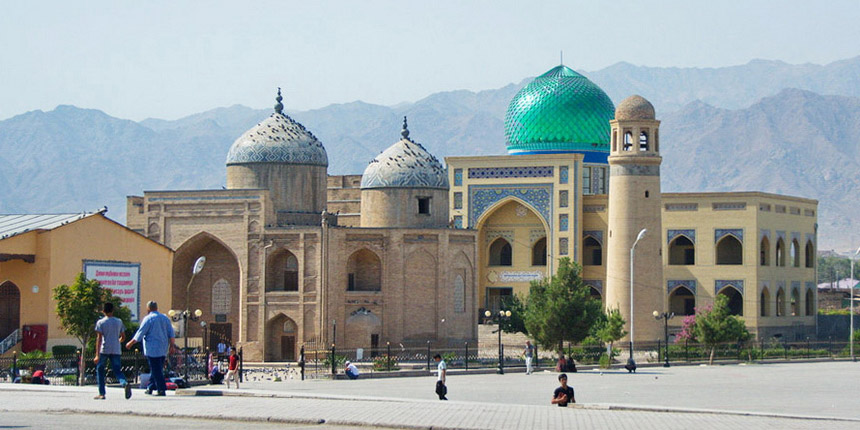Things to Do and Sightseeing Tours in Khujand
Khujand is one of the oldest cities of Central Asia, according to some sources it was founded in the VII-VI centuries BC. It was conquered by Alexander the Great, who rebuilt, fortified and re-named it to Alexandria Eskhata (Extreme). Located on the Great Silk Road, and connecting Samarkand with Fergana Valley, Khujand enjoyed a favorable geopolitical location and significant transport importance. Later, it was conquered by the Arabs (in the VIII century), and then it maintained resistance to the army of Genghis Khan, but eventually was destroyed (in the XIII century). However, very soon the city revived, becoming one of the largest commercial, cultural and scientific centers of the Central Asian region. And even today, Khujand is an important industrial, scientific and cultural center of northern Tajikistan.

Khujand, occupying, mainly, the left bank of the Syr-Darya River, is surrounded by mountains with the slopes planted with orchards. A few kilometers upstream, there is a place where the Kayrakkum reservoir starts, stretching for 55 km. The Khujand citizens and tourists like to go swimming, sunbathing or fishing on the lakeside. The city’s climate is as beautiful as nature – the hot summers are softened by the winds and the waters of the Syr-Darya, while the winters are mild with little snowing.

As a thousand years ago, nowadays Khujand still plays an important transport role. The city is crossed by the shortest route, coming from Central Uzbekistan to the Fergana Valley, and afterwards to Kyrgyzstan. The city has a railway station, as well as an airport located 11 km from its center. The nearest major cities are Bekabad (40 km to the west) and Kokand (140 km to the east).

Being home of famous scientists, writers and musicians, Khujand preserves the status of the scientific and cultural center in Tajikistan. The city has a theater, regional history museum and an archaeological museum as well as the Khujand State University, with an enrollment exceeding 10,000 students from all over the country.

Khujand managed to preserve some monuments dating back from the XVI-XVII centuries - the Sheikh Muslihiddin Mausoleum and Jami Masjidi Jami Mosque as well as Khujand Fortress, which was built together with the city more than 2,500 years ago, and underwent several stages of complete destruction and restoration.

And today, following the tracks of the Great Silk Road, it is impossible to travel in Central Asia without visiting Khujand, the city which become a corridor in the snowy mountains.



